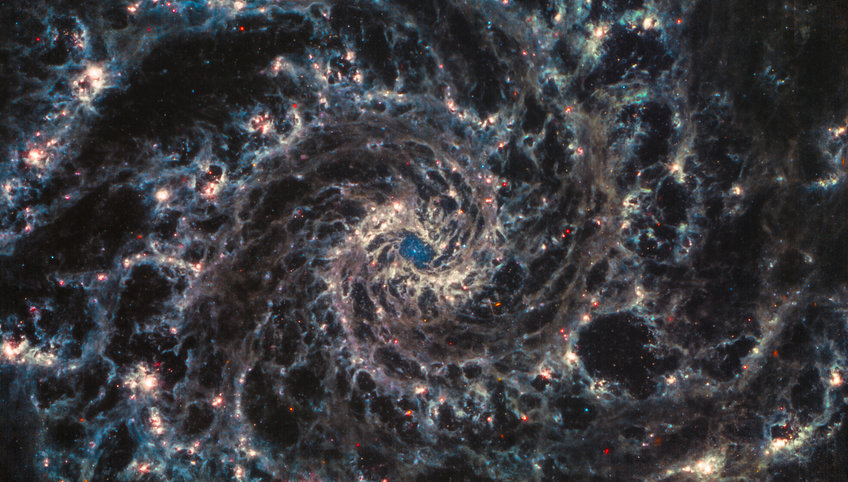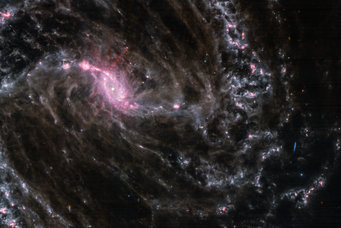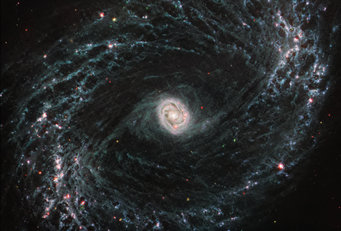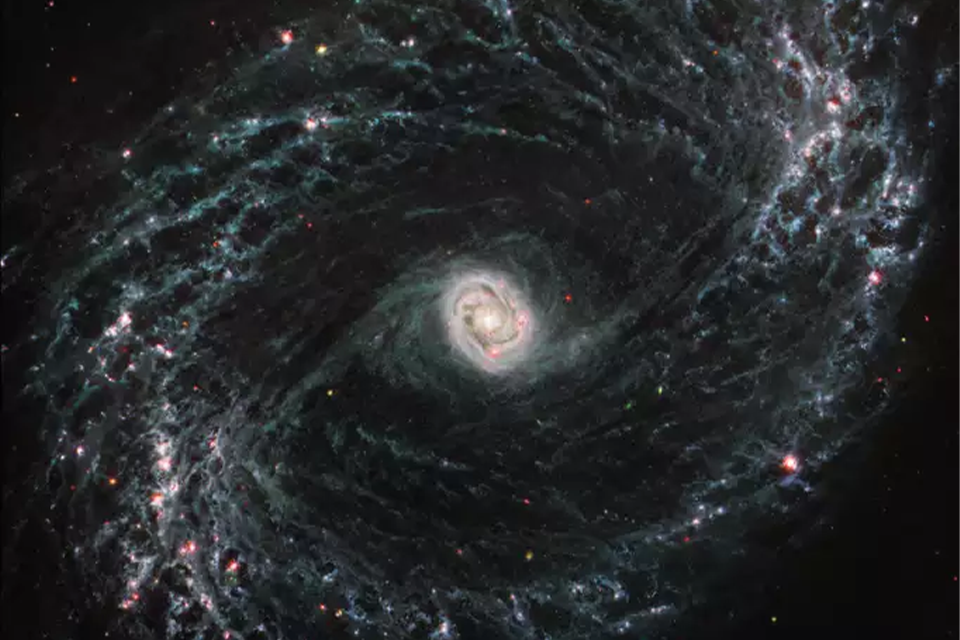James Webb Space Telescope unveils star formation in gas and dust networks of other galaxies
The first images of the James Webb Space Telescope are helping to uncover the missing pieces of the star formation puzzle in nearby galaxies. Data from the powerful infrared telescope are revealing previously hidden regions where new stars are born. These images provide the first clues as to how networks of gas and dust become the site of active star formation.

Astronomers from around the world, including scientists from the Max Planck Institute for Astronomy, want to unravel some of the last mysteries of star formation in galaxies. The study, called Physics at High Angular Resolution in Nearby Galaxies with JWST (Phangs-JWST), led by Janice Lee, principal investigator of the Gemini Observatory at the National Science Foundation's NOIRLab in Tucson, Arizona, USA, analyses images from the James Webb Space Telescope. The team's latest results were recently published in a special issue of the Astrophysical Journal Letters.
Four galaxies in new light
In its first months of scientific operation, the James Webb Telescope has observed four of the 19 planned galaxies in relative proximity to the Milky Way at infrared wavelengths. These are all galaxies that we see from above or below. They are NGC 628 (M 74), NGC 1365, NGC 7496 and IC 5332. "We are particularly proud of the major technical contributions made by the Max Planck Institute for Astronomy to one of the infrared cameras used, Miri, such as the filter wheel mechanism of the imaging camera," says Eva Schinnerer, group leader at the Institute. She leads the Phangs collaboration. The Miri images show a network of highly structured gas and dust in these galaxies. In particular, the filigree structures, which have remained hidden until now, indicate where and how the flowing gas is directly converted into stars. One example is the gas flowing into the centre of the galaxy NGC 1365, where it fuels the formation of new stars.

“The clarity in which we are seeing the fine structure certainly caught us by surprise,” says Adam Leroy from the Ohio State University, USA. “The new Phangs-JWST data give us a fascinating insight into the star formation of surrounding spiral galaxies at the highest resolution,” Lise Meitner Group Leader Nadine Neumayer explains. The infrared images complement the existing data from the Hubble Space Telescope from the optical spectral range.
The Phangs team has been using Hubble images, among others, for years to study how these galaxies look in optical or ultraviolet light. But they only saw gas and dust in the regions where the stars are forming, because the light of the new stars does not penetrate out of these birth cocoons. So, the crucial early stages of a star’s life cycle remained hidden. Infrared light, however, can penetrate the dust. The James Webb Space Telescope, which is very powerful in the infrared range, now makes it possible to see the missing pieces of the star birth puzzle.
Fine webs of star formation

The images, such as that of NGC 628, show structures that are finer than ever seen before. The team, however, is not yet able to explain these structures yet. "The new perspective that JWST gives us on the centres of galaxies contributes fundamentally to our understanding of the evolution of star clusters and galaxies," says Nils Hoyer, a PhD student at the Max Planck Institute for Astronomy and the University of Heidelberg. “JWST allows us to precisely pinpoint the youngest stars still within their birth clouds in nearby galaxies,” adds Schinnerer. In addition, the researchers can trace where and how inflowing gas is converted into stars, as in NGC 1365. They then compare these findings with the corresponding processes in the Milky Way. In the centre of the galaxy NGC 628, the observations also reveal a very massive and dense cluster of stars. Overall, the new data already show great diversity, ranging from quiet regions to regions that are dense, massive and characterised by episodes of active star formation.
The astronomers discovered not only how stars form in the prominent spiral arms, but also in between them. “By leveraging JWST’s unprecedented infrared imaging capability, we finally localised the young stars in ‘spurs’ of gas extending from the spiral arms.” explains Tom Williams, former astronomer at the Max Planck Institute for Astronomy. "Our earlier observations had already indicated that this might be the case". The initial results show, as expected, that the star formation rate is higher in the spiral arms, where gas and dust are more abundant. However, the efficiency with which gas is converted into stars appears to be constant across the galactic disc.
James Webb's images are available to all research teams and also to the public. The Phangs team is working to increase the value of these images to the astronomical community by aligning them to complementary data sets obtained previously from other observatories. The quality of the data opens the door to an even more comprehensive understanding of how small-scale processes in the intricate web of dust and gas interact with large-scale galaxy evolution and structure. It is also worthwhile to directly compare images of star formation in other spiral galaxies obtained with James Webb with correspondingly more detailed results from the interior of our home galaxy, the Milky Way.
